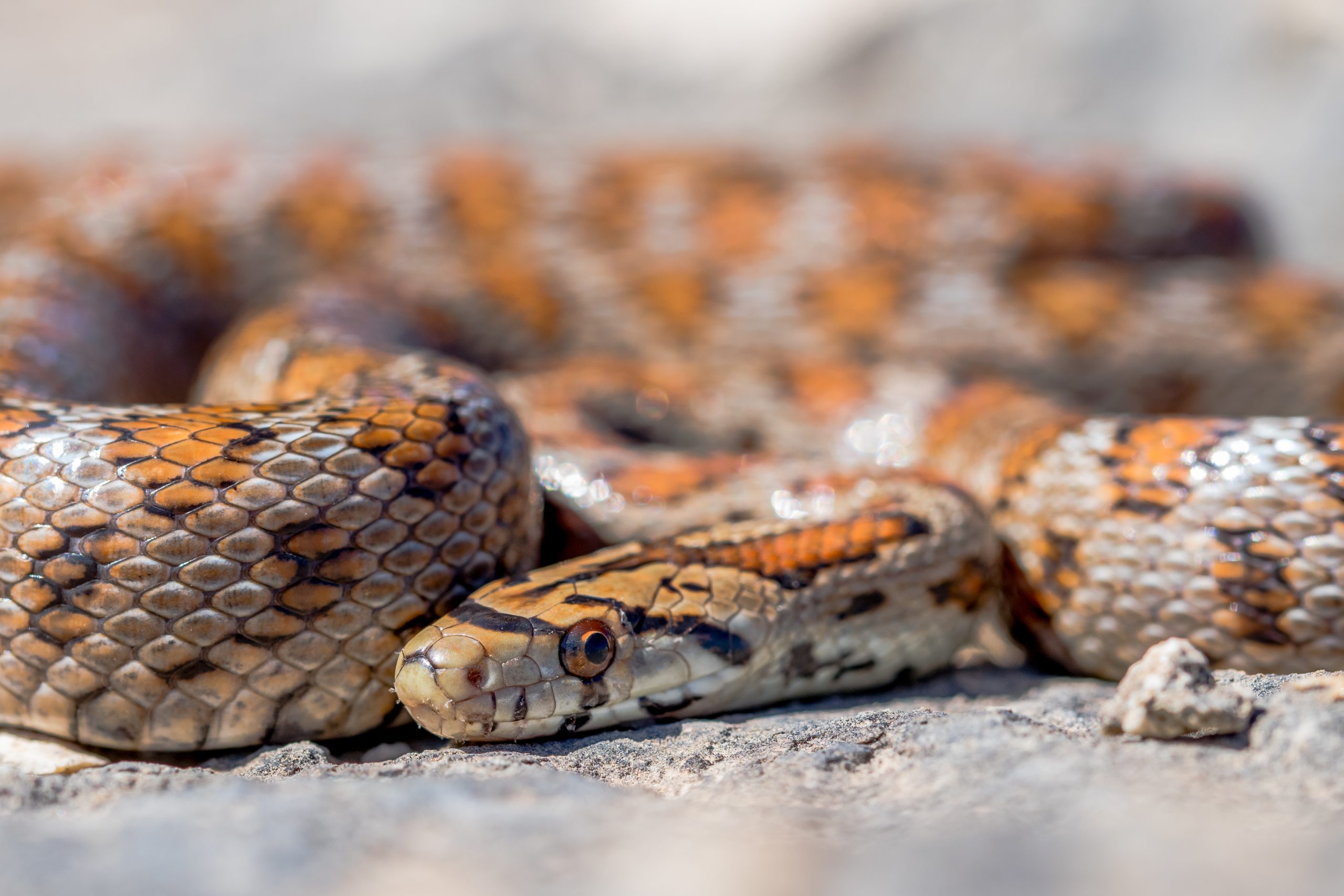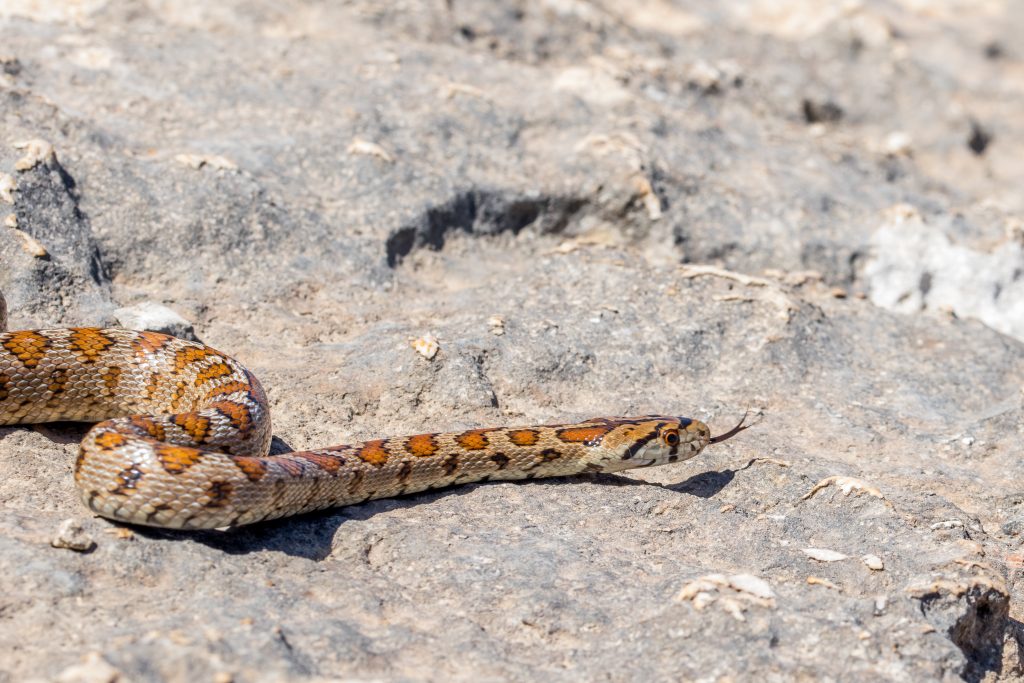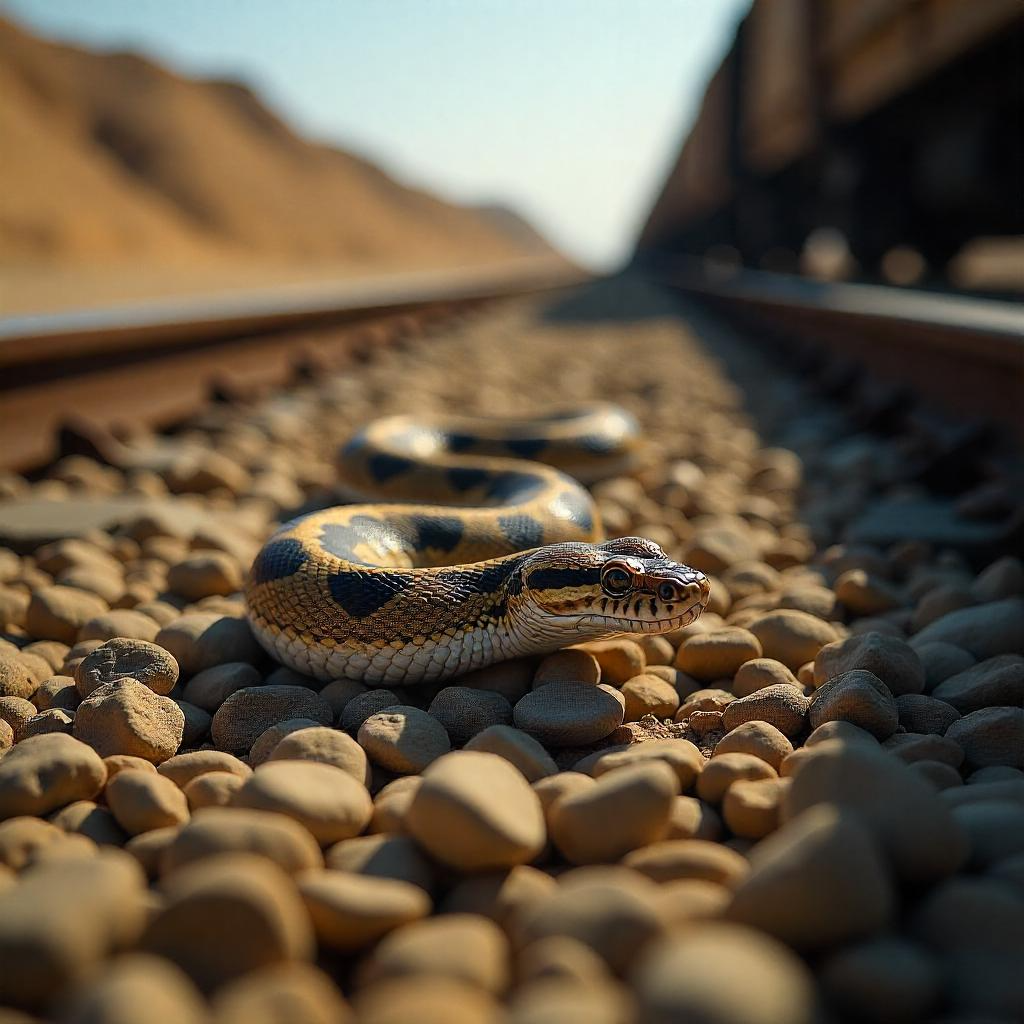
In the grand tapestry of transportation mishaps, few stories are as serpentine as the one that unfolded on the railway tracks of India. Picture this: a massive python, not content with its usual jungle haunts, decided to take a detour onto the railway tracks, causing a halt to train services. This wasn’t just any snake; it was a creature of such girth and length that it could have been mistaken for a moving section of the track itself.

The Unlikely Passenger
It was an ordinary day in India, with trains chugging along their usual routes, when an extraordinary event occurred. A python, perhaps tired of its usual slithering grounds, found itself basking on the warm railway tracks. The sun must have been particularly inviting that day, or perhaps the snake was just in the mood for a change of scenery.
As the train approached, the conductor, accustomed to the usual obstacles like cows and goats, was taken aback by the sight of the massive reptile lounging on the tracks. The train, moving at its usual pace, was forced to come to an abrupt stop to avoid a collision. Passengers, unaware of the impending drama, were jolted from their seats as the train screeched to a halt.
The Standoff
With the train immobilized, the situation became a standoff between man and nature. The railway staff, equipped with nothing more than their wits and a healthy dose of caution, approached the snake. The python, seemingly unfazed by the human presence, continued to bask in the sun, perhaps contemplating the absurdity of the situation.
Efforts to coax the snake off the tracks were met with limited success. The reptile, perhaps enjoying the attention, showed no inclination to move. Passengers, now aware of the cause of the delay, began to murmur among themselves. Some took out their phones to capture the unusual sight, while others speculated on the snake’s motives. Was it a local resident? A tourist? Or perhaps a train enthusiast?
The Resolution
After what seemed like an eternity, the railway staff decided to take more direct action. Using long poles, they gently nudged the snake off the tracks. The python, perhaps realizing that its sunbathing session was over, slithered off into the underbrush, leaving behind a trail of amused and bewildered passengers.
The train, now free of its scaly obstruction, resumed its journey. However, the incident became the talk of the day. Passengers shared their experiences, comparing the snake’s leisurely demeanor to that of a seasoned traveler who had seen it all. Some joked that the snake had merely been conducting a routine track inspection.
The Aftermath
In the days that followed, the story of the python that stopped a train spread like wildfire. News outlets picked up the tale, and social media platforms were abuzz with memes and jokes. The incident sparked debates about wildlife conservation and the challenges faced by railway authorities in managing such unexpected encounters.
Some passengers, reflecting on the event, expressed a newfound respect for the creatures that share their environment. Others, however, questioned the efficiency of the railway system in dealing with such disruptions. Could there have been a better way to handle the situation? Perhaps a dedicated snake removal team?

Lessons Learned
While the incident was certainly unusual, it highlighted the delicate balance between human infrastructure and the natural world. It served as a reminder that animals, too, have their territories and routines, and sometimes, they intersect with ours in the most unexpected ways.
For the railway staff, it was a lesson in patience and adaptability. For the passengers, it was a story to tell for years to come. And for the python, it was just another day in the life of a creature that knows how to make an entrance.
In the end, the python didn’t just stop a train; it reminded everyone that nature has its own schedule, and sometimes, we just have to wait for it to pass.
Note: This article is a fictionalized account based on various real-life incidents involving animals on railway tracks. The names and events are created for illustrative purposes and are not based on any specific news reports.










































